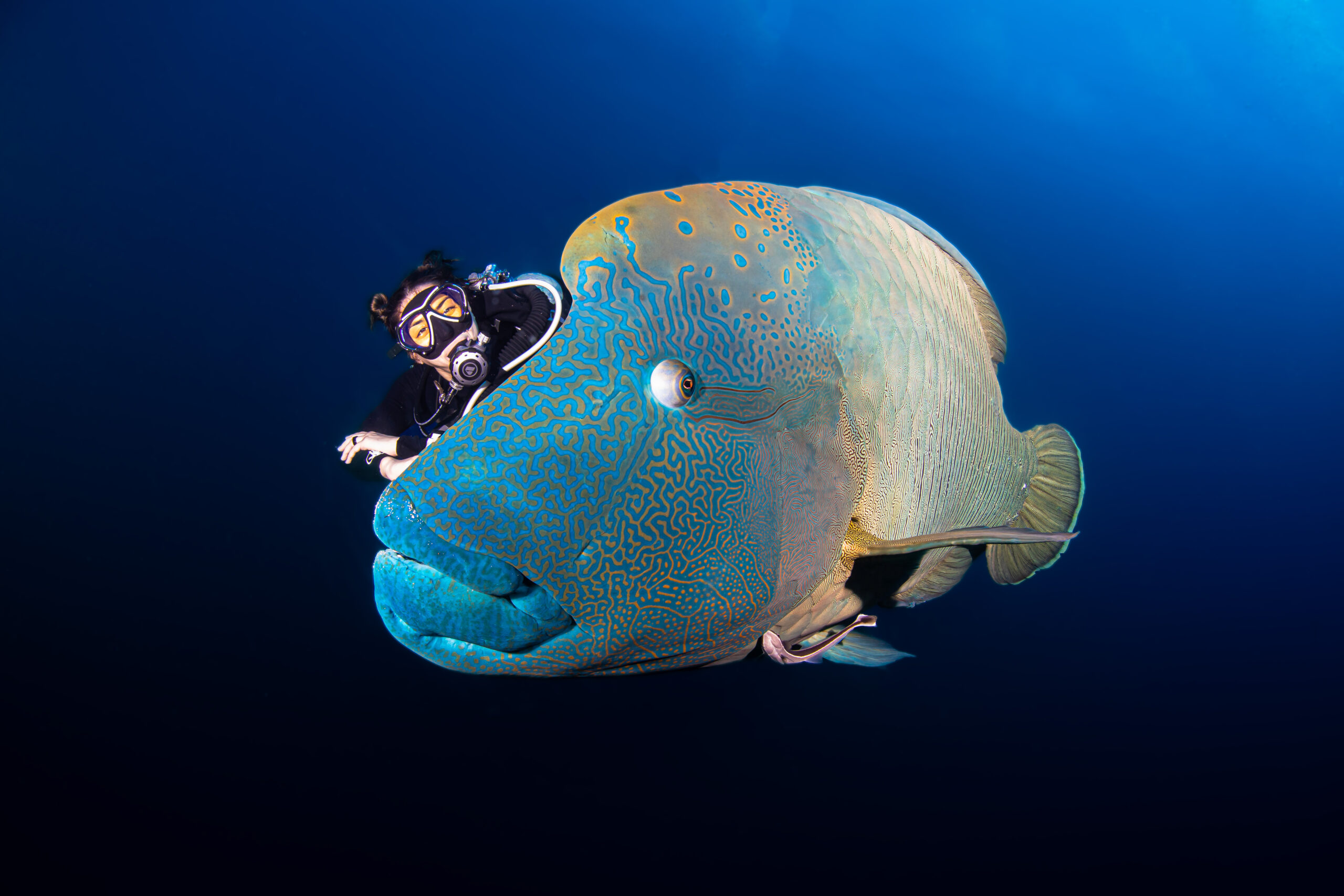Where are all the Napoleon fish gone?

Don’t we love them? The humphead wrasse, also known as Napoleon wrasse. They are one-of-a-kind beauty, with diamond patterning, varying green, blue, and yellow scales, and distinctive “eyelashes”—black diagonal lines behind each eye.
I remember diving for the first time the Red Sea in the early 2000’s, when we saw almost at every dive Napoleon fishes. Not only one, more, sometimes up to a point, you almost didn’t turn anymore. A common fish.
Nowadays, we are happy, if we see one once in a while. What happened?
Well, there are a few reasons and doing some research we found out, that there are several facts which are endangering the population of the Napoleon critically.
First of all, the humphead wrasse is long-lived, but has a very slow breeding rate. Individuals become sexually mature at five to seven years and are known to live for around 30 years.
Second, and for sure the major reason for their disappearing is reputation for being delicious. They’re considered a luxury food in Hong Kong and Southeast Asia.
Also, WWF (World Wildlife Foundation) urges local governments to stop the trade and consumption of humphead wrasse—one of the most expensive live reef fishes in the world and ranges them as critically endangered.



IUCN reasons for their endanger
By IUCN (International Union for Conservation of Nature), the Napoleon is listed on the Red List as endangered for following reasons.
So, let’s conserve and preserve them. If you see any strange or uncommon movement of other people, boats or fisherman. Report it to your dive guides.
And next time you see them: enjoy their beauty of colours and their shinny appearance!
Text: Nina Lyner, Indeep Liveaboard
Photo: Eslam Basuny, Freelance photographer & friend
Don’t we love them? The humphead wrasse, also known as Napoleon wrasse. They are one-of-a-kind beauty, with diamond patterning, varying green, blue, and yellow scales, and distinctive “eyelashes”—black diagonal lines behind each eye.
I remember diving for the first time the Red Sea in the early 2000’s, when we saw almost at every dive Napoleon fishes. Not only one, more, sometimes up to a point, you almost didn’t turn anymore. A common fish.
Nowadays, we are happy, if we see one once in a while. What happened?
Well, there are a few reasons and doing some research we found out, that there are several facts which are endangering the population of the Napoleon critically.
First of all, the humphead wrasse is long-lived, but has a very slow breeding rate. Individuals become sexually mature at five to seven years and are known to live for around 30 years.
Second, and for sure the major reason for their disappearing is reputation for being delicious. They’re considered a luxury food in Hong Kong and Southeast Asia.
Also, WWF (World Wildlife Foundation) urges local governments to stop the trade and consumption of humphead wrasse—one of the most expensive live reef fishes in the world and ranges them as critically endangered.



IUCN reasons for their endanger
By IUCN (International Union for Conservation of Nature), the Napoleon is listed on the Red List as endangered for following reasons.
So, let’s conserve and preserve them. If you see any strange or uncommon movement of other people, boats or fisherman. Report it to your dive guides.
And next time you see them: enjoy their beauty of colours and their shinny appearance!
Text: Nina Lyner, Indeep Liveaboard
Photo: Eslam Basuny, Freelance photographer & friend
